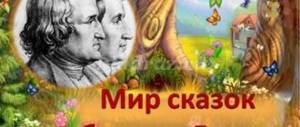Essay on Andersen's fairy tale "Thumbelina"
“Thumbelina” is the name of one of the most famous works of the storyteller Hans Christian Andersen, originally from Denmark. This tale was published in 1835. It can be called a real “author’s fairy tale”, because to create it the author did not use motifs of folk art and folklore. The fairy tale “Thumbelina” was invented by the author himself. The narration of this fairy tale begins with a story about a woman who was poor. Despite this, she really wanted to give birth to her child, but could not have children for a long time. At the same time, she was very kind and caring, and all the sorrows and hardships did not force her to become cruel.
As a reward for her meekness and such patience, fate gave the heroine a daughter - a little girl, Thumbelina. She was very tiny, but she brought joy and happiness to the poor woman’s house. One might think that with this plot Andersen wants to convey to the reader that if you really expect a miracle and believe in it, then it will definitely happen.
In the text we see how the author introduces us to the main character. He describes the tiny baby with special trepidation. We learn that her height is only 2.5 centimeters, she can sing beautifully, and her voice is amazing, which few people have heard such a performance.
But, as in many fairy tales, there are also negative heroes in this work. A little girl was kidnapped by a toad. Andersen describes her as a disgusting creature, wet, and also large. The Toad really liked the cute Thumbelina, and she thought that it would not be bad to marry the little one to her son. Thumbelina managed to escape from the toad, and small fish came to her aid.
READ THE TALE “THUMBLINA”
This plot leads us to believe that there is a constant struggle in the world between good and evil, dark and light forces. And those heroes whom we see in Andersen’s fairy tale show us that most often the side of goodness and honesty wins.
Then our heroine finds herself in the forest because the cockchafer who met her found Thumbelina charming. But the rest of the beetles supported the opposite opinion, called her ugly, and then the cockchafer decided that he would no longer be friends with Thumbelina. So our heroine found herself alone in an unfamiliar forest.
This episode makes the reader understand how difficult it is sometimes to accept a person who is not accepted by others, who criticize him and evaluate him based on their impressions.
It should be taken into account that the hero’s first impression was positive, but after other people’s advice it changed. How much do we trust other people's opinions?
This happens in everyday life too. For some reason, people are forced to criticize what is not familiar to them and stands out from the crowd.
To some extent, this situation is familiar to the author himself, so he boldly supports the main character throughout the tale.
Then the little heroine ends up in the house of an old mouse. She was able to shelter Thumbelina and give her food and shelter. The girl helps her new friend with the housework. But the old woman wanted to marry Thumbelina to a mole, as old as herself, but rich. Few people would be happy for Thumbelina if everything planned worked out. Our tiny baby had to live underground in complete darkness, without a single ray of light, sun, birdsong or the smell of flowers and herbs.
But when we read a fairy tale, we hope for a happy ending. This is what happens. Our tiny heroine is saved by a swallow. She takes the baby to warm countries, far from creepy and cold earthen labyrinths, mice and moles. In a new place, the heroine met a friend, a handsome prince, and it was with him that she was ready to share her fate.
After reading the fairy tale, we are once again convinced that we should never choose a decision for someone else and indulge those who do it. You need to believe in a happy and positive outcome of the situation, never give up, be kind and responsive. This is exactly what this wonderful fairy tale teaches us.






